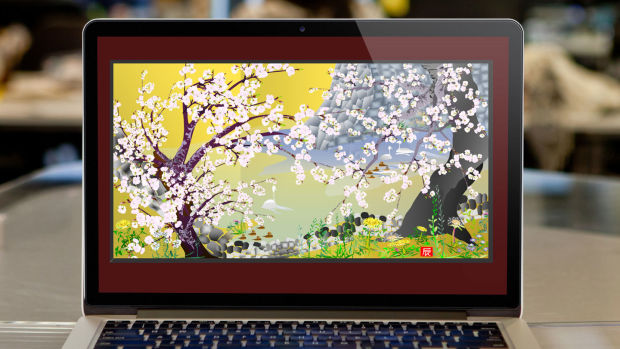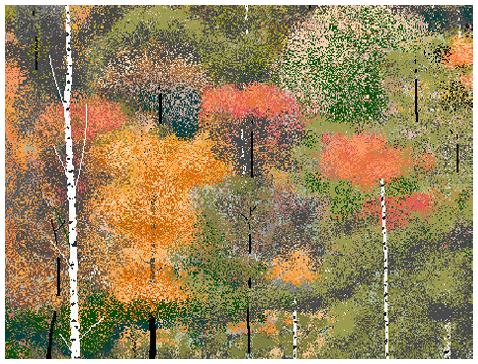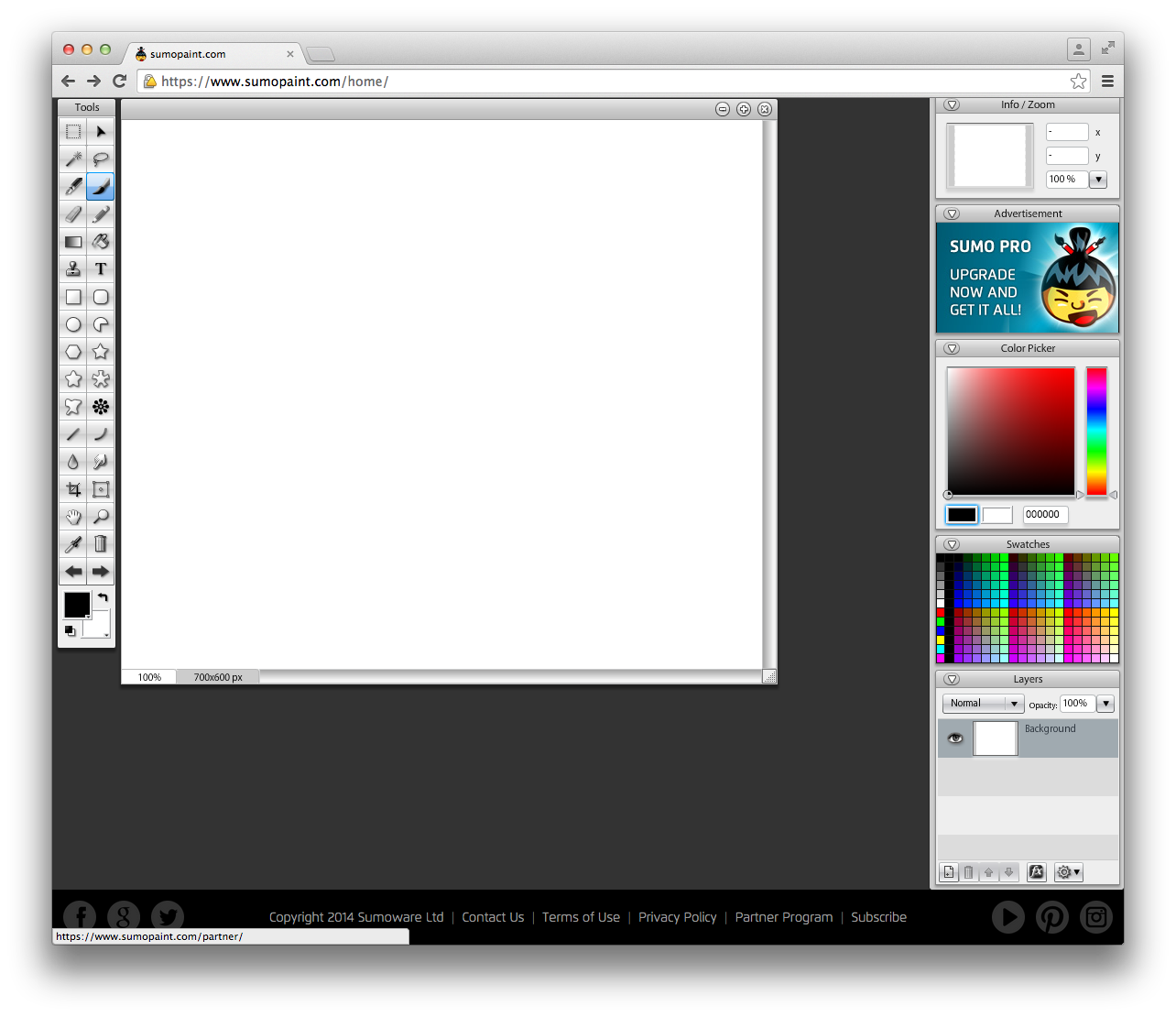This entry is an activity for Teach-Now while working towards a teaching certificate. Specific goals and requirements had to be met by this entry and is by no means designed to be an independent feature.

Learning in the 21st century means moving beyond the traditional class of instructions given from a teacher to an innovative collaborative discussion within environments in and outside the classroom (21st Century Schools, 2010). Art as a medium for expression lends itself to be a subjective product and even a process; there is no right or best way to convey your message when your meaning is self-expression by whatever medium you have chosen. Art is a set of skills that have been practiced over a long period of time; and art is a tool that allows you to express yourself if you have something to say. You can throw any tool at a person; but if that person has no desire, no mind, no motivation what could you expect as a result? An extreme answer could be to say that the person’s intention was to not respond, but that is still a response. The artist will have to ask themselves: Does the response have a meaning? What is the statement? What is the purpose?
“To be prepared for the 21st century, our children require the following skills and knowledge: an understanding of history, civics, geography, mathematics, and science, so they may comprehend unforeseen events and act wisely; the ability to speak, write, and read English well; mastery of a foreign language; engagement in the arts, to enrich their lives; close encounters with great literature, to gain insight into timeless dilemmas and the human condition; a love of learning, so they continue to develop their minds when their formal schooling ends; self-discipline, to pursue their goals to completion; ethical and moral character; the social skills to collaborate fruitfully with others; the ability to use technology wisely; the ability to make and repair useful objects, for personal independence; and the ability to play a musical instrument, for personal satisfaction.” (Ravitch, 2010)
Creativity
In the past, learning art meant copying a technique from a previous master and learning the basic building shapes, colors, and process such as applying watercolors to paper or subtracting from stone. Art students still need the basics — like a language — so visual communication can develop and allow for interpretation. Beyond the basics, art students can explore based on this knowledge complex productions that dwell in their imaginations. There are basic facts for all; the new learning concentrates on the project and problems that are of the students’ concerns (21st Century Schools, 2010).

Critical Thinking
Students will have to evaluate if a meaning exists, what is their meaning, how to express it, how it will affect the audience, and to be prepared for that response. The student should understand the types of impacts and, if necessary, defend the reasoning. Upcoming artists will have to understand that this form of message dissemination does not shelter them from any responsibility of that message. Art is not a shield, but an extension of the artist.
Another critical thinking exercise is Visual Thinking Strategy. A skill designed by Abigail Housen and Philip Yenawine (Wild Center, 2015) elicits the viewer — initially art students — to “think critically by asking open ended questions about [the] art[work].” The practice sparks observations, develops ideas, and builds critical thinking skills around the artwork’s story, meaning, and design.
Collaboration and Communication
Classroom critique meetings will not only offer any input regarding the quality of each other skills, the students will learn the emotional, cognitive, and aesthetic impact created by their work. Partnership for 21st Century Learning (n.d.) summarized these two skills best where I would be plagiarizing if I tried to list the thought differently; a student should:
“Communicate Clearly
• Articulate thoughts and ideas effectively using oral, written and nonverbal communication skills in a variety of forms and contexts
• Listen effectively to decipher meaning, including knowledge, values, attitudes and intentions
• Use communication for a range of purposes (e.g. to inform, instruct, motivate and persuade)
• Utilize multiple media and technologies, and know how to judge their effectiveness a priori as well as assess their impact
• Communicate effectively in diverse environments (including multi-lingual)
Collaborate with Others
• Demonstrate ability to work effectively and respectfully with diverse teams
• Exercise flexibility and willingness to be helpful in making necessary compromises to accomplish a common goal
• Assume shared responsibility for collaborative work, and value the individual contributions made by each team member”

Tools
Now, art within the 21st century can still be art — the tools are more and different.The choices are numerous. Apple’s app store alone offers 2304 applications at the date of this article’s publication. Beyond the store, a vast array of sites offer applications to download and install like Sketch from Bohemian (http://bohemiancoding.com/sketch/), or Sumo Paint where the work happens within a web browser (https://www.sumopaint.com/home/#app).
Maybe the tool already exists within the platform. Hal Lasko (2015) received a computer for his 85th birthday. On that computer was a basic painting program called Microsoft Paint. Developed in the 80’s, the program is not cutting edge but Lasko made artwork that breaks the expected production from the program. Another example demonstrating going beyond the expected comes by Tatsuo Horiuchi. The 73-year-old artist uses Microsoft Excel basic shapes to create his prints (Statt, June 11, 2013).
The question will be, what tool do you need. With the ever-growing supply, the answer becomes daunting. The art student will need to decide on the limit of investigation and evaluate what in that group has the best matched potential or the happy accident leading to something unexpected.
Along with the tools, the artwork communication and presentation has a greater access to an audience because of the internet. Art before relied on the small community that witnessed the artwork and accepted it as a “little ‘c’ (Kaufman, 2009).” If that artwork gained an honor of achievement, it could progress all the way through the “mini ‘c’” and the“pro ‘c’” to the “Big C” or the Eminent Creative. This recognition process could very much be slow requiring the right place at the right time from the neighborhood audience to the downtown coffee shop/gallery into The Metropolitan Museum or The Guggenheim. The internet on the other hand provides a quick and easy way to get out into the public a lot faster where if the right person finds it, it could go viral exponentially faster. “The Internet, which has enabled instant global communication and access to information, likewise holds the key to enacting a new educational system, where students use information at their fingertips and work in teams to accomplish more than what one individual can alone, mirroring the 21st-century workplace. (Chen, 2010)”
The quality of learning leans heavily on motivation and curiosity. This may happen intrinsically when a student will simple take the lead and responsibility to learn. Sometimes, teachers as facilitators, may need to design a different stimulus for students not active or interested in the project. With both directions, student learn by instigating information to be knowledge through experience.
References
21st Century Schools, See the possibilities… . (2010). What is 21st Century Education. http://www.21stcenturyschools.com/What_is_21st_Century_Education.htm
Chen, Milton. (October 10, 2010). How Do You Define 21st-Century Learning? One question. Eleven answers. http://www.edweek.org/tsb/articles/2010/10/12/01panel.h04.html
Kaufman, James C.; Beghetto, Ronald A. (2009). Beyond Big and Little: The Four C Model of Creativity. https://s3.amazonaws.com/jck_articles/Kaufman,+Beghetto+-+2009+-+Beyond+big+and+little+The+four+c+model+of+creativity.pdf
Lasko, Hal. (2015). The artist’s website: http://www.hallasko.com/pages/about
Partnership for 21st Century Learning, P21. (n.d.). Communication and collaboration. http://www.p21.org/about-us/p21-framework/261
Ravitch, Diane (October 10, 2010). How Do You Define 21st-Century Learning? One question. Eleven answers. http://www.edweek.org/tsb/articles/2010/10/12/01panel.h04.html
Statt, Nick. (June 11, 2013). Excel Is An Art Form: These Beautiful Images Are Proof. http://readwrite.com/2013/06/11/excel-is-an-art-form-these-beautiful-images-are-proof
Wild Center. (2015) On location during Allen Blagden’s exhibit – https://www.wildcenter.org/moments
